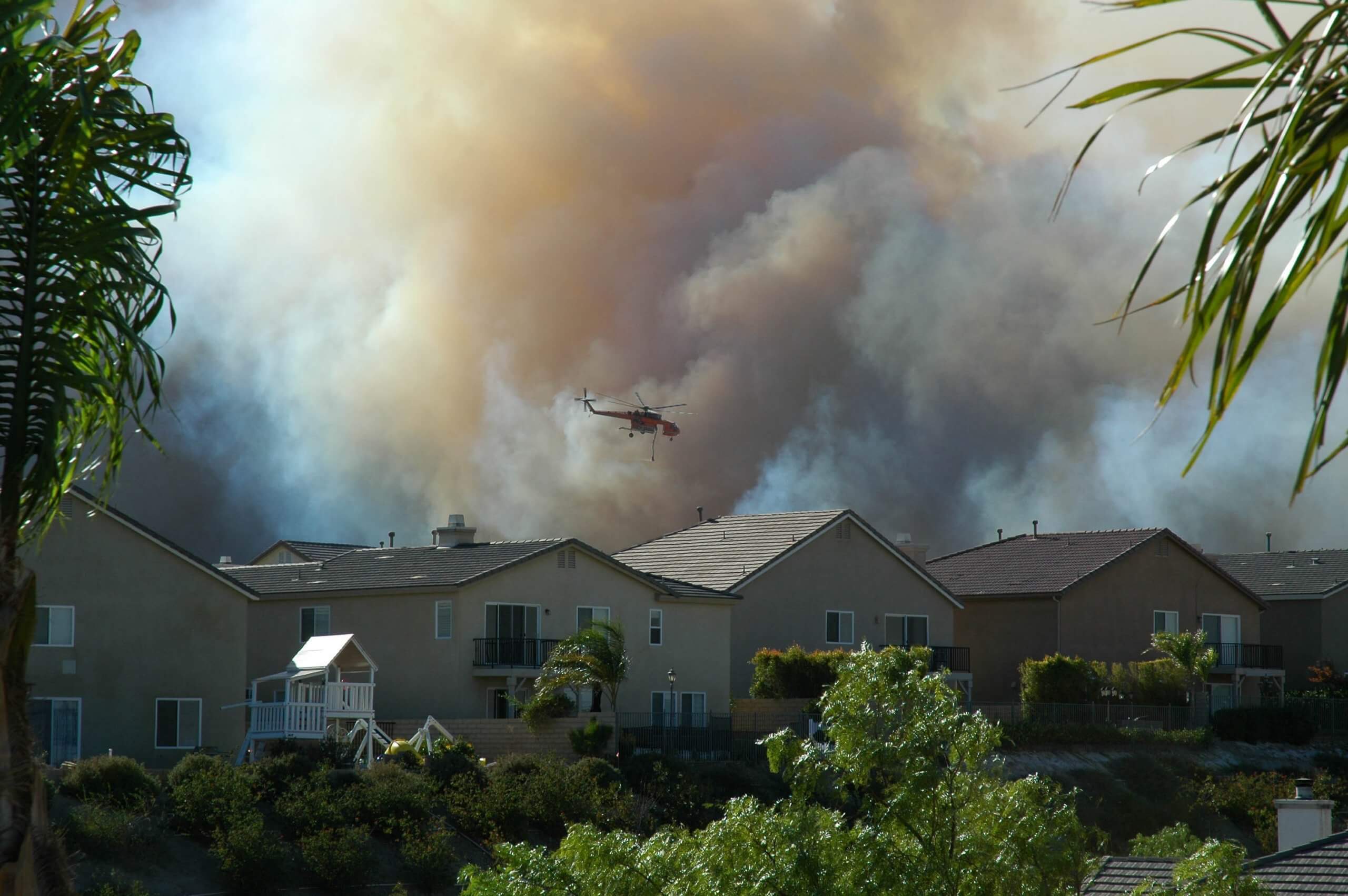Summer is here and it’s not all beach days, BBQs and pool parties for America’s western states. It’s wildfire season, and with it comes smoke and a dramatic increase in PM2.5 or particulate matter. A group of researchers in Washington found disturbing correlations between inhaling wildfire smoke, poor air quality and mortality rates. Learn more about their findings, the effect smoke has on our health and indoor air quality solutions to protect you and your loved ones.
Wildfire Smoke Exposure Study
The study tested for a possible relationship between non-traumatic death and wildfire smoke exposure. Conducted by scientists at the University of Washington, the Washington State Department of Health and the Washington State Department of Ecology, researchers studied wildfire seasons in the state from 2006 to 2017. They found mortality rates jumped roughly 1.3% the day after a smoke event in Washington.
“Our research found a slight increase in mortality risk on the same day of exposure to wildfire smoke across all populations,” scientist and lead author of the study Annie Doubleday said in an article by the Kent Reporter. “What we didn’t expect to find was a significantly greater increase in mortality risk on the day following a wildfire smoke event for all populations, regardless of underlying health conditions or whether the air continued to be smoky that day.”
What Is in Wildfire Smoke and How Does It Affect My Health?
Wildfire smoke is a complex cocktail of gases and fine particulate matter that are emitted from burning trees, bushes and plants. It impacts our indoor air quality and health. When we breathe in wildfire smoke, those fine particulates penetrate deep into our lungs. Once present, they can cause a plethora of symptoms, including:
- Chest discomfort
- Shortness of breath
- Fatigue
- Runny nose
- Chronic heart conditions
- Lung diseases
- Premature death
Wildfire smoke can be damaging to cardiovascular health, especially for people with preexisting cardiovascular conditions who are more vulnerable to air pollutants. Learn what you can do to protect your heart health: https://t.co/Qs6r39SDZ6 #SmokeReadyWeek #HealthyHeart pic.twitter.com/reGieOeqPI
— US EPA Research (@EPAresearch) June 15, 2021
Sensitivity to and symptoms of wildfire smoke will vary person-to-person. People with existing lung or heart diseases, the elderly, children, diabetics and pregnant women should pay special attention to local air quality reports during a fire. AirNow.org is a great site to track local outdoor air quality.
How To Protect Indoor Air Quality From Wildfire Smoke
When experiencing an active nearby wildfire, you must limit your exposure to smoke. Only leave the house if it’s absolutely necessary. This means no jogging or play dates at your local park. If you are staying indoors, make sure all windows and doors are closed, even if it’s hot outside. Instead, rely on air conditioning to stay comfortable. In the event you don’t have an air conditioner and it’s hot, consider staying with family or friends, or purchasing a portable unit.
If you or someone in your home fits the high-risk criteria mentioned earlier, consider talking to a local HVAC or indoor air quality expert. They can recommend the best indoor air quality solutions to keep your air clean. These solutions include:
MERV 13 Filtration
As the first line of defense against wildfire smoke, upgraded air filters like MERV-13 capture PM2.5 particles circulating in your air before they enter your lungs. This is the easiest way to improve the air quality inside your home during a wildfire.
 Air Filtration: Looking to upgrade your air filter in time for wildfire season? Check out the various benefits of a MERV-13 air filter →
Air Filtration: Looking to upgrade your air filter in time for wildfire season? Check out the various benefits of a MERV-13 air filter →Indoor Air Quality Monitoring
A professionally installed air quality monitor mounted in the return duct of your home’s HVAC system has the ability to assess airborne pollutants throughout the whole home. The central air monitoring system keeps you updated on pollutant events in real-time. Also, the device conveniently feeds data directly to your smartphone. Among other helpful benefits, it can tell you when your filter needs to be replaced and what current PM2.5 levels are. Data is also sent to the HVAC or IAQ expert who installed it. You can work together on the best air strategy for your home with a better peace-of-mind during wildfire season.
Whole-Home Active Air Purification
An active air purifier actively seeks out smoke particles and pollutants in your home. The air scrubbers clump the fine particles in smoke together, making them easier for your filter to capture and eliminate.
 Whole-Home Air Purification: Why purify one room when you can purify your entire house? An active air purifier makes it easy to remove air pollutants caused by wildfires →
Whole-Home Air Purification: Why purify one room when you can purify your entire house? An active air purifier makes it easy to remove air pollutants caused by wildfires →Stay Safe During Wildfire Season
In addition to being vigilant, the aforementioned indoor air quality solutions will protect you and your family during wildfire season. It’s impossible to avoid air pollutants all the time, but we must do our best to fight for clean air, even when there is a natural disaster.



